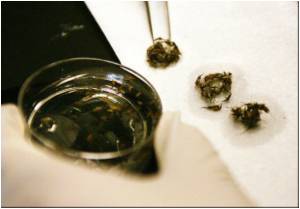Scientists have discovered molecular protein-protein interaction between structural hepatitis C virus protein (HCV) and a viral replication protein.

These new data underline the essential role of the viral protein known as 'core' as a primary organizer of the infectious HCV particle assembly and support a new molecular understanding of the formation of the viral particle itself.
"While our finding that the HCV core interacts with the non-structural helicase protein was not totally unexpected, this had not really been confirmed until this study," said Donny Strosberg, who led the study.
"But the most exciting part is that small molecule inhibitors of dimerization [the joining of two identical subunits] of core actually inhibit interaction between core and helicase, thus possibly preventing production of an infectious viral particle," said Strosberg.
Previously, Strosberg developed a novel quantitative test for monitoring these protein-protein interactions with the specific goal of identifying inhibitors of the core dimerization, which would block virus production.
However, in the new study, Strosberg and colleagues focused on non-structural proteins that provide functions relating to HCV production, in particular NS3 helicase.
Advertisement
The interaction of the core protein with this non-structural protein also confirms core as a key organizer of virus assembly and suggests it acts to facilitate the packaging and integration of the newly synthesized viral RNA.
Advertisement
Source-ANI















